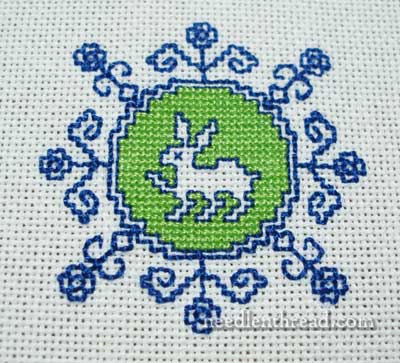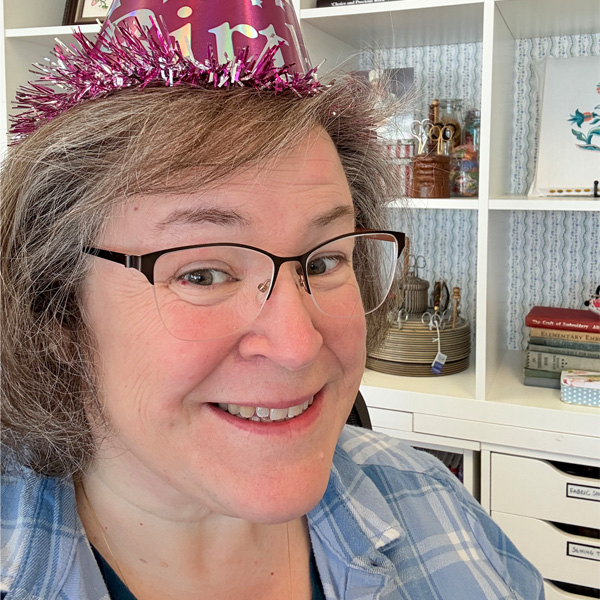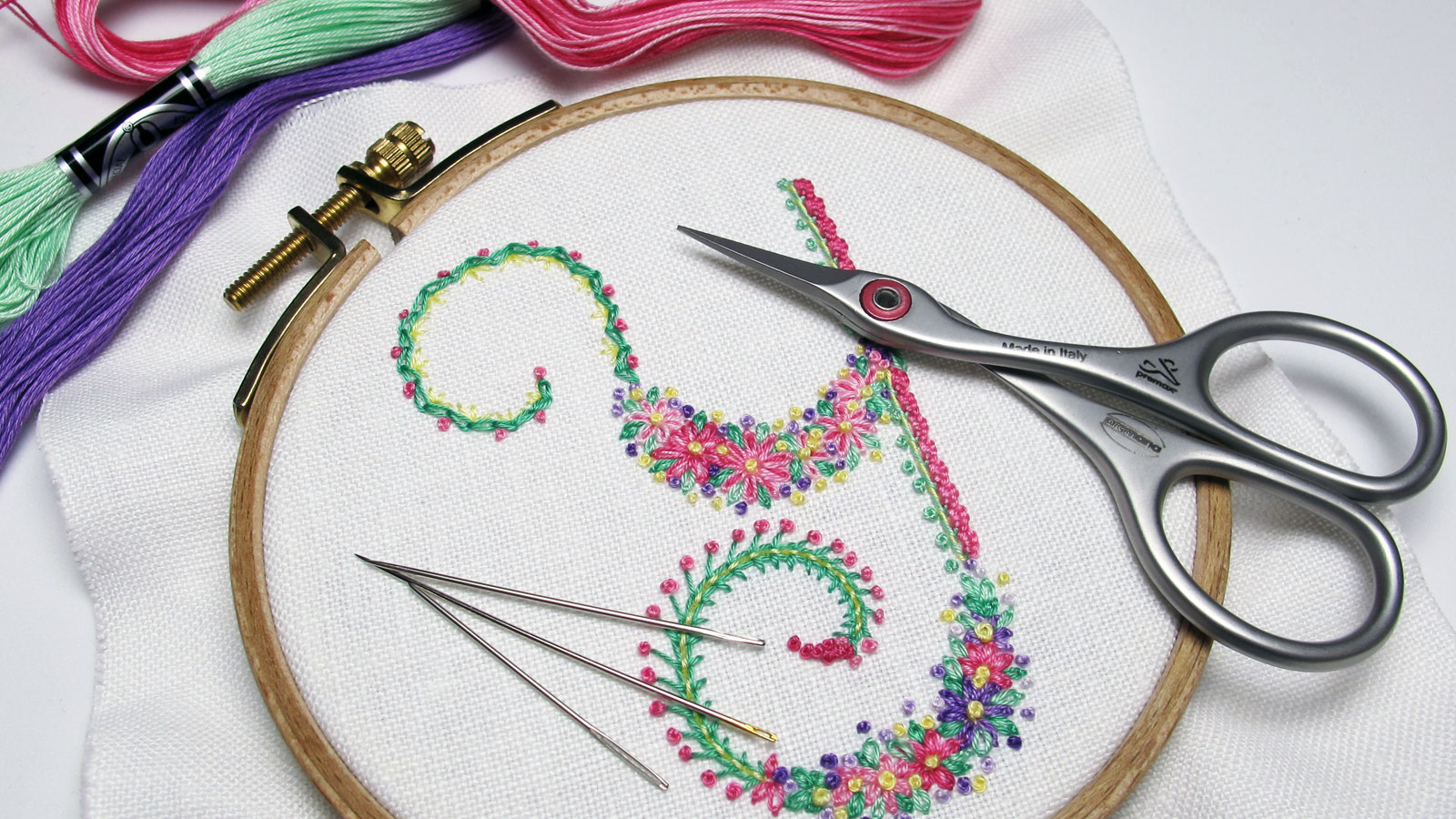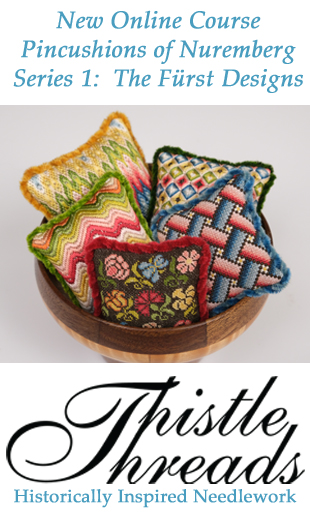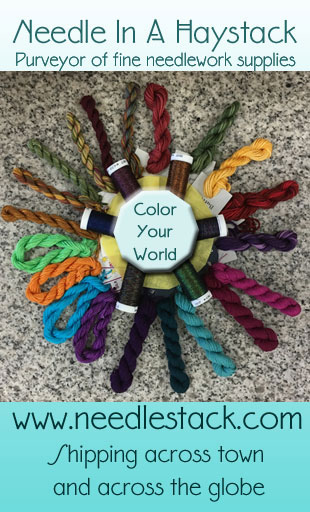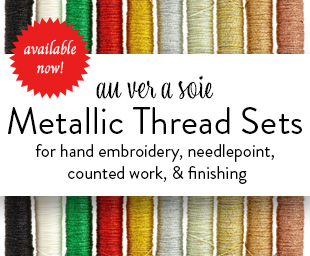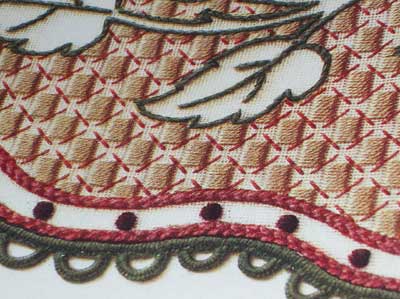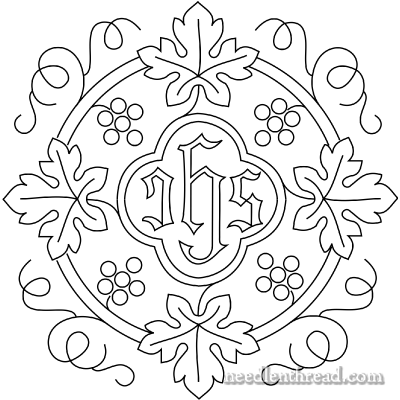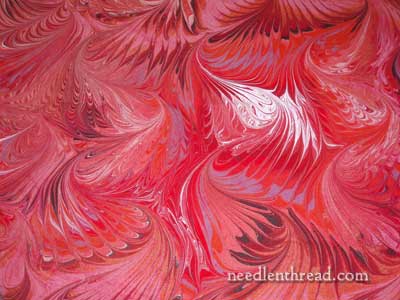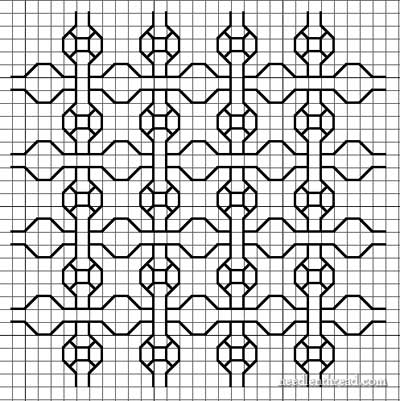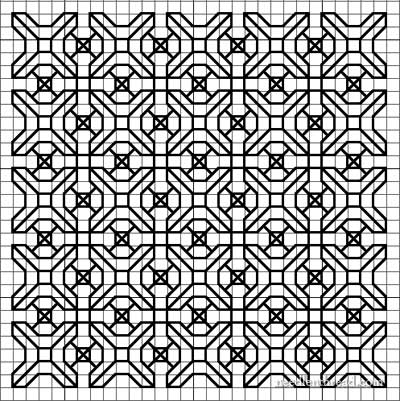October 21, 2010
Assisi Embroidery: A Wee Rabbit & A Book
A couple months ago, I worked up a tiny Assisi Embroidery motif, so that I could demonstrated what a “voided” area looks like in embroidery. I picked a bunny for the voided subject in a little medallion, just because I like bunnies.
I thought I’d show you the little fellow, which is stitched in tiny cross stitch that covers the background completely. Often, in Assisi work, the cross stitched area is not quite so compactly filled, so that more of a lacy look is achieved. But with this piece, I’m stitching on 25 count fabric, over one, with one thread of stranded cotton, which pretty much fills the background pretty solidly.
